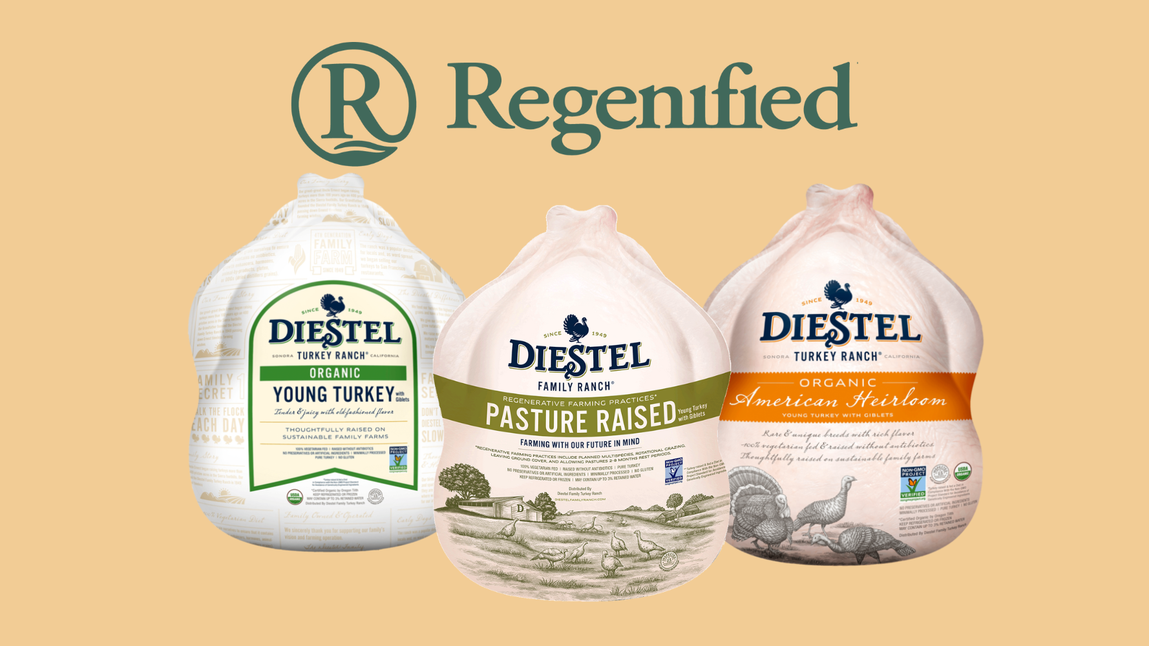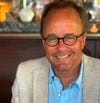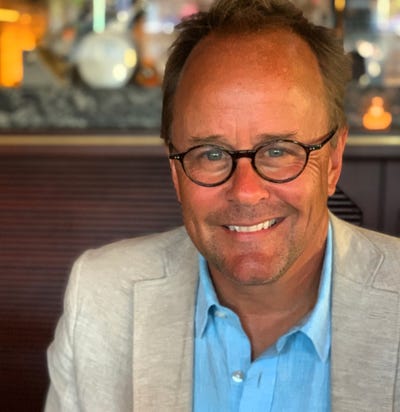Diestel Family Ranch turkeys with regenerative seal deliver more nutrients
A Utah State University study found Diestel turkeys with Regenified certification deliver increased nutrient density compared to conventional birds.

At a Glance
- Diestel Family Ranch started raising organic turkeys in 1999; now it offers turkeys certified by Regenified.
In 1999, half a century after Diestel Family Ranch began farming turkeys in California, the business embraced organic. Ever since, Diestel has stocked natural grocery retailers with organic birds. Now, 25 years after the pivotal decision to go organic, the company is raising some turkeys that champion another seal: regenerative agriculture certification from Regenified.
And according to a new study, that seal highlights more than Diestel’s soil-enlivening, climate-friendly agricultural practices. The turkeys raised using regenerative agriculture methods provide higher nutrient density than conventional turkeys. The study, conducted by Utah State University’s Center for Human Nutrition Studies, found that compared to conventional turkeys, Diestel's regenerative certified birds showed higher levels of omega-3 fatty acids; a better omega-6 to omega-3 ratio; increased levels of zinc, phytochemicals, vitamins B3 and B12.
“Nutrient density is where we landed as a key point of differentiation. The hypothesis was the with healthier land and healthier-quality feed, the nutrient profile of the meat is going to be higher,” said Heidi Diestel, one of the fourth-generation leaders of the company today. “Back to the beginning, my relatives started with a phone book. They found the addresses of butcher shops, and went from shop to shop, selling five or 10 turkeys at a time. And butchers would say wow, the meat tastes incredible and the meat-to-bone ratio is also incredible. That was their selling point.”

But boosted nutrient profiles, she said, weren't the reason the company embraced regenerative agriculture. Instead, it came from the family's commitment to the land and the environment. The company was one of the first, in the 1990s, to seek and gain USDA Organic certification. It’s also the first turkey brand on the market emblazoned with the Regenified seal on its packaging.
“When you are a farmer and you look around and talk with other farmers, everybody acknowledges the degradation of the soil. When you drive through Central California you see the dust, the unhealthy aspects of industrial farming,” she said. “And you think, there’s just got to be a better way. There’s got to be a food system more rooted in the Earth, where we are supporting biodiversity and encouraging the natural ecosystem to work for itself, father than man putting all of these applications on the soil, on the crops.”
Today, she said, the turkeys still taste outstanding. But in today's "loud" consumer marketplace, Diestel felt it “had to invest in a way to tell the story that goes beyond claims like no antibiotics or vegetarian fed, even though these are important,” she said.
Diestel turkeys sold with the Regenified seal aren’t organic, although Diestel maintains a strong commitment to raising organic birds in addition to regenerative. But the company’s legacy of organic farming made changing some flocks to regenerative a bit easier than it would have been if Diestel had farmed conventional. Still, the company worked with area livestock ranchers and align schedules in a way that would allow Diestel birds to graze on their land. Incorporating livestock into farming operations is important for regeneration. For Diestel, rotation schedules could be complex. Some of the company’s land, too, needed more native plants and trees to achieve regeneration. Now, some of those ranches have more trees, which is important because turkeys perch on branches.
For now, about 2,000 acres out of Diestel’s roughly 6,000 acres is regeneratively farmed. In addition to working with the land, Diestel also had to source regenerative feed for the turkey. That pursuit, Diestel said, posed challenges. The supply chain for regenerative turkey feed is not yet well-oiled, although Diestel said it’s improving rapidly.
Another challenge gets back to the nutrient density issue: marketing. “There’s a lot of potential storytelling that goes along with this, and it’s a beautiful thing showing consumers what regenerative means,” she said. “But it’s a lot of education and storytelling. Trying to make it bite-sized can be a feat.”
Read more about:
RegenerativeAbout the Author
You May Also Like





